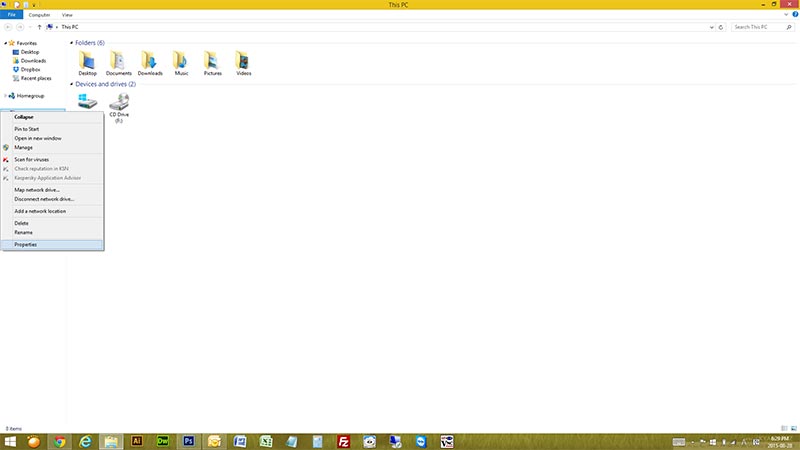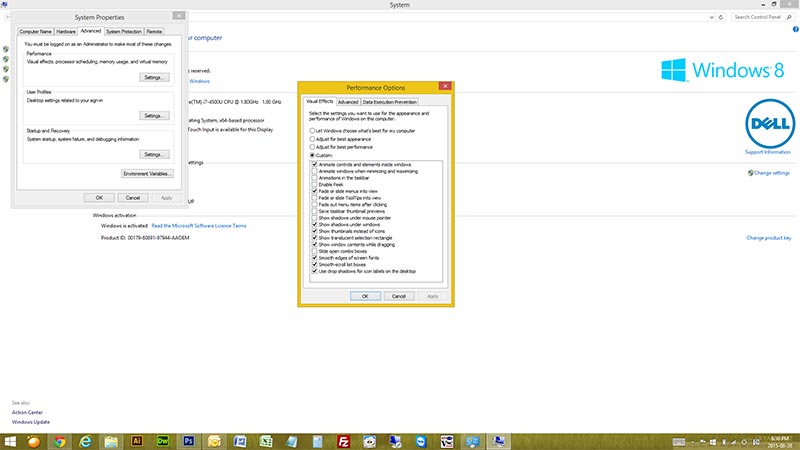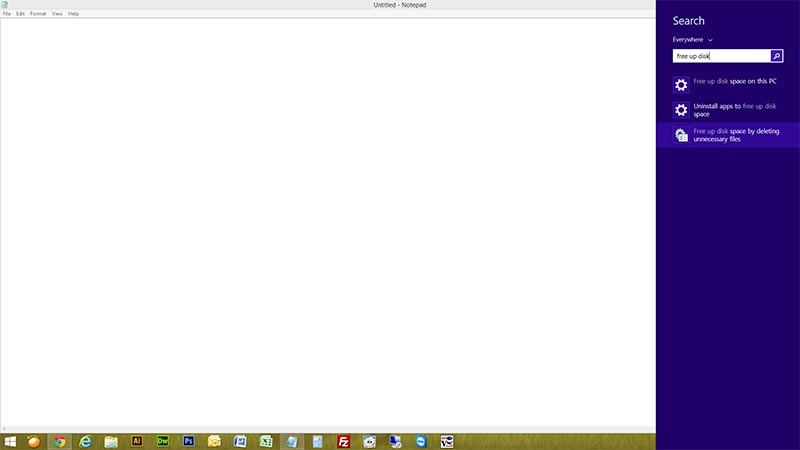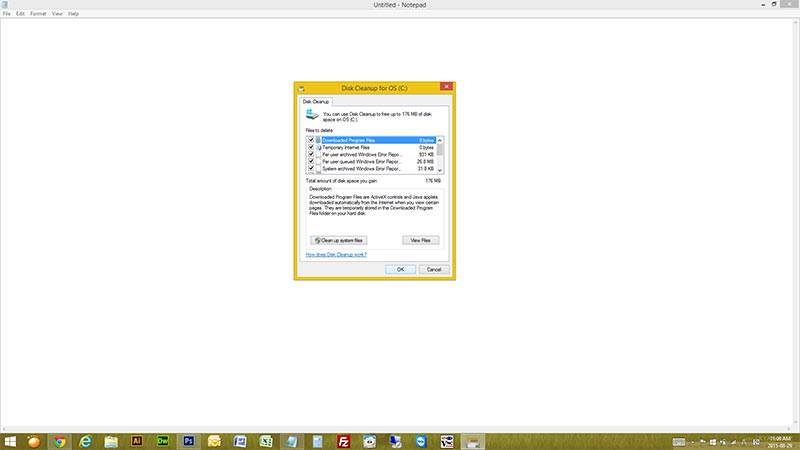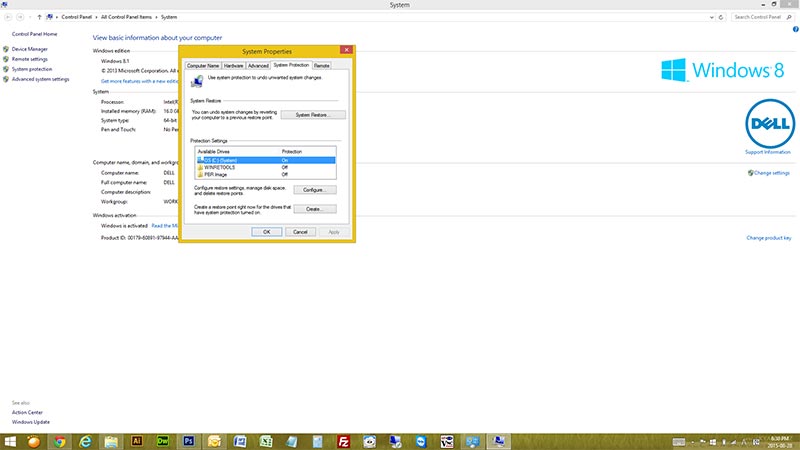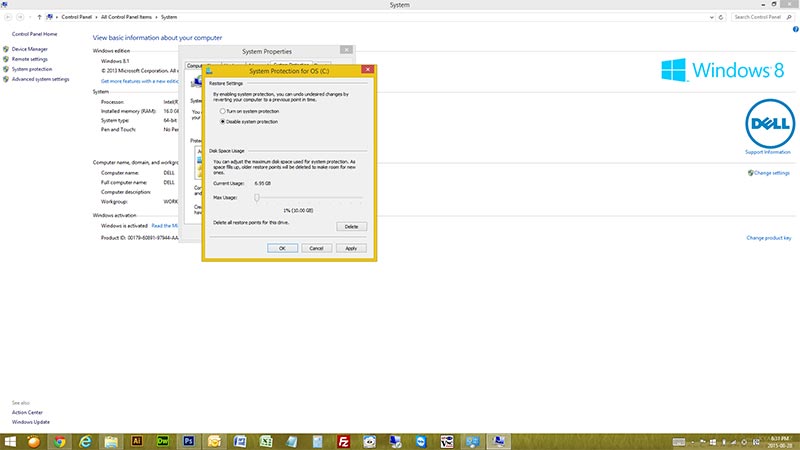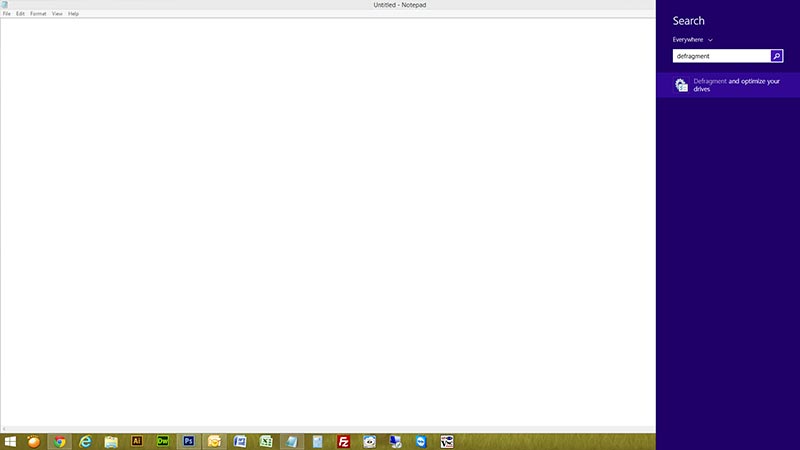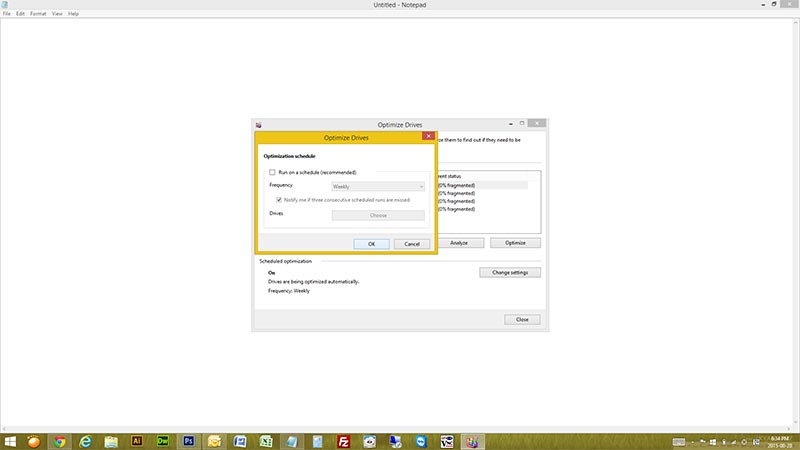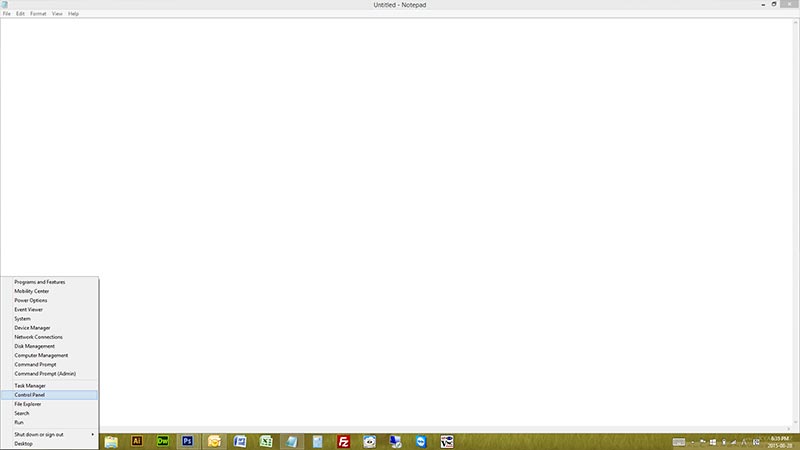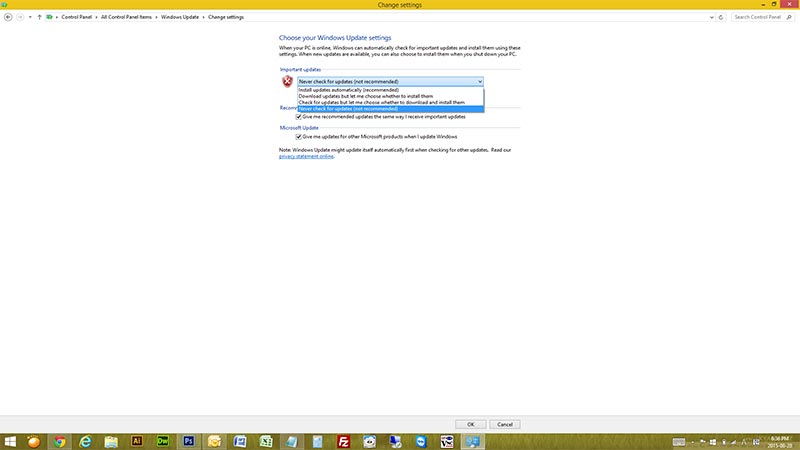Windows 10 & 8.1 are slowing down ? – There are things you can try to make your Windows 10 & 8 Super Fast !
It is about time for your Windows 10 and Windows 8.1 slowing down… Any computers in the world, no matter it’s high end or low end computer, it will eventually slow down due to more applications and files on your computer, but Don’t worry. We know how to make it super fast! without upgrading the actual computer components like CPU, and memory. This instructions will help you to make Windows faster on your own without spending a cent. You do not need to go to a computer store for this. Why don’t you turn on your computer and be prepared for Windows optimization ? Let’s get started now. 😀 😀 😀
1. Turn off Windows 10 & 8.1 Visual Effects
As many of you already know, the later Windows products like Windows 10, Windows 8.1, and Windows 7 have fancy visual effects like Apple Macs. (since Windows Vista) By turning off the graphical effects of Windows, you will lose the fancy visual like fading effect, but it will speed up the entire Windows performance. Let’s do it!
Open “File Explorer” -> On the left side menu, find “This PC” -> Right-Click “This PC” -> Click “Properties” -> On the left side menu, Click “Advanced system settings” -> Click “Advanced” tab -> Click “Settings…” in Performance box – >Turn off every visual effects in the box.
2. Try Windows 10 & 8.1 Disk Clean-up
Windows Disk Clean-up will let you delete unnecessary files that Windows keeps on the hard drive. As you use your computer, files that are stored, files that are not completed removed will stay in your hard drive. The remaining files will make your computer slower than when you first bought the computer. Using this utility, you can delete Temporary Internet files, Downloaded files, Error Reporting files, Recycle Bin, Windows Logs that are stored on your computer. If you have used your computer without removing these files, by now, the file size will be huge! Let’s delete them before it gets too big! By removing those files, you can get more free space not just speed! 😀 😀 😀
Bring your mouse cursor to bottom-right corner (or top-right corner) For Windows 10, just click the Windows search bar in the bottom -> Click “Search” -> Type “free up disk” -> Click “Free up disk space by deleting unnecessary files” -> Check all items -> Click “OK”
3. Disable Windows 10 & 8.1 System Restore (Be-Careful)
For this one, we are going to disable the automatic Windows System Image backup. As we disable this feature, the Windows won’t make a backup image of your current Windows settings, and therefore, when there is a system corruption or damage, it is hard to restore. Of curse it is safer with the Windows System Restore turned on, but if you are okay with it, and if you really want to increase the speed, turn it off.
If you are a computer expert and do backup your file regularly, then you should turn off this to speed up your Windows 10 and 8.1.
If you are a beginner, and have important data and file on your computer, you better leave it on.
In Advanced system settings -> Click “System Protection” tab -> Find the local hard drive with “On” -> Select the drive -> Click “Configure” -> Choose “Disable system protection” -> Click “OK” to finish
4. Try Windows 10 & 8.1 hard disk defragment and Turn off scheduled hard disk defragment
by default, the Windows does defragment & optimize your hard drive when it needs. Some people say it is better when it is turned on, but if you do not copy and delete files everyday, it is better to turn off the scheduled hard disk defragment feature. Also, let’s try hard drive defragment to increase your hard drive speed. Degragment may take many hours, so try it when you have time.
Bring your mouse cursor to bottom-right corner (or top-right corner) For Windows 10, just click the Windows search bar in the bottom -> Click “Search” -> Type “defragment” -> Click “Defragment and optimize your drives” -> Click “Change settings” under Scheduled optimization -> Uncheck “Run on a schedule (recommended)” -> Click “OK” -> Now, let’s do the defragment -> Select the System Drive (OS Drive) -> Click “Optimize”
5. Change Windows Update setting (ONLY FOR WINDOWS 8.1)
The Windows update feature keeps your Windows secure and perform without bugs and glitches (less bugs…) by installing latest updates from Microsoft. However, the Windows does download and install new updates when your computer is turned on, and when it is in use. This is why when you change the Windows Update to manual way or when you turn off, the Windows will perform faster. You can apply Windows Update when you want. Not when you are working on your laptop (Pc, computer…). Sorry. This is not for Windows 10 users.
Bring your mouse cursor to bottom left corner -> Right-Click -> Click “Control Panel” -> Click “Windows Update” -> Click “Change settings” -> Change the setting to “Check for updates but let me choose whether to download and install them” or “Never check for updates”
6. Turn off Windows 10 notification & feedback (ONLY FOR WINDOWS 10)
In Windows 10, we have noticed that Windows 10 automatic notification and feedback feature slowing down Windows 10. Fortunately, we can turn it on and off in Windows 10 settings. Let’s turn it off, but if you want Windows 10 displays notification and alert, you should leave it on. Let’s not forget you are here to speed up your slow Windows 10! 😀 😀 😀
Turning off Windows 10 notifications
Click “Windows 10 Start Button” -> Click “Settings” -> Click “System” -> Click “Notifications & actions” -> Turn off notifications and tips from Windows 10
Turning off Windows 10 feedback
Click “Windows 10 Start Button” -> Click “Settings” -> Click “Privacy” -> Click “Feedback & diagnostics” -> Select “Never” for feedback and select “Basic” for send data to Microsoft
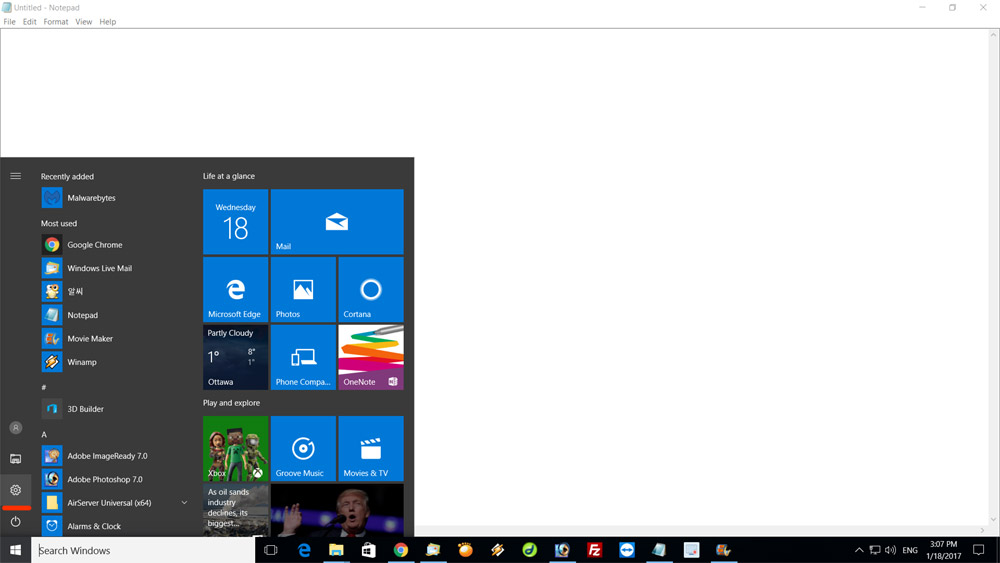
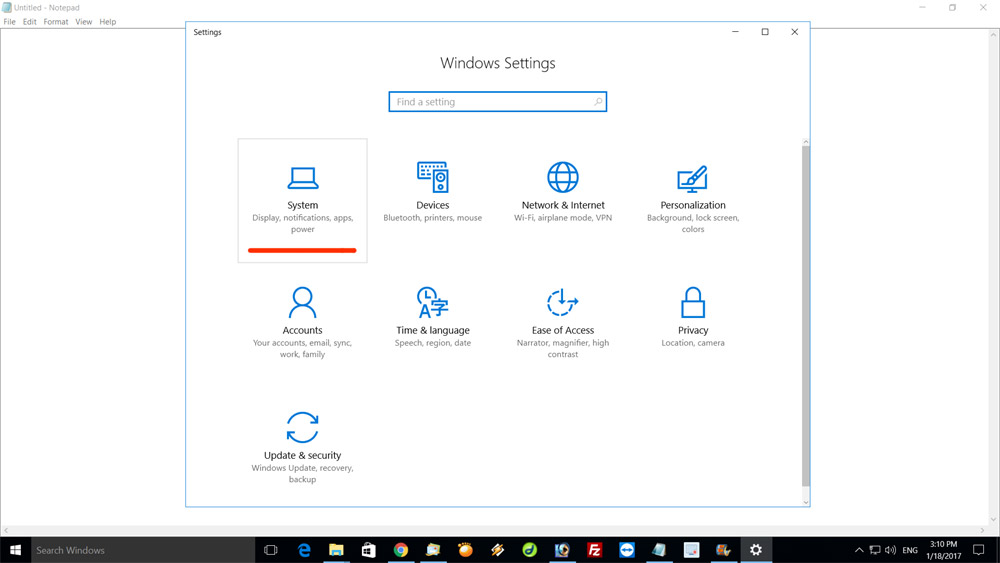
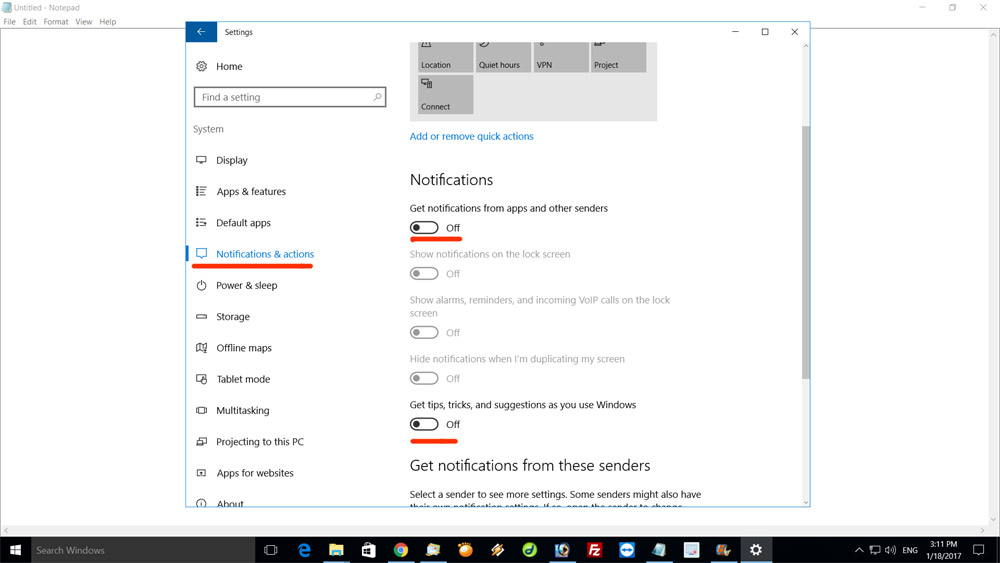
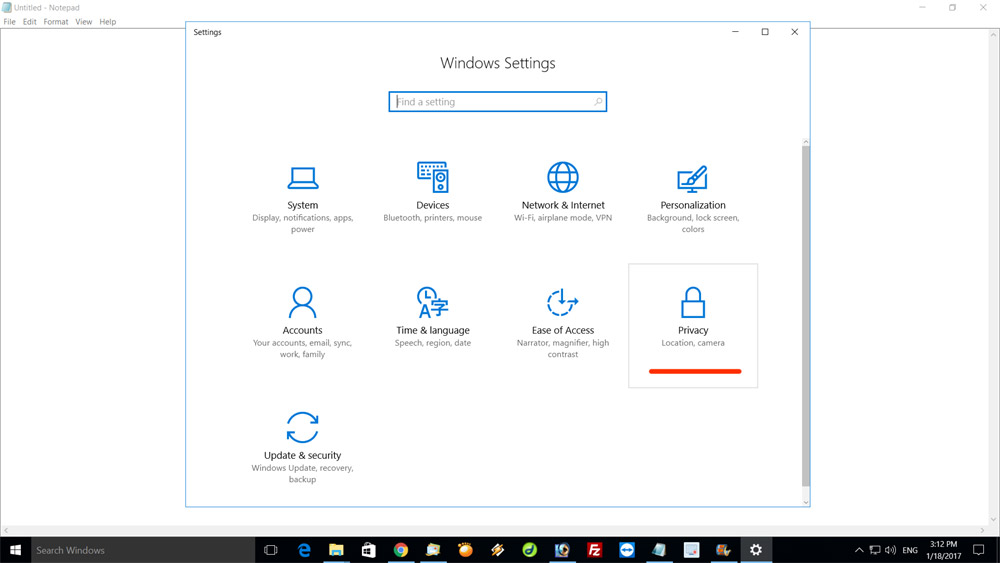
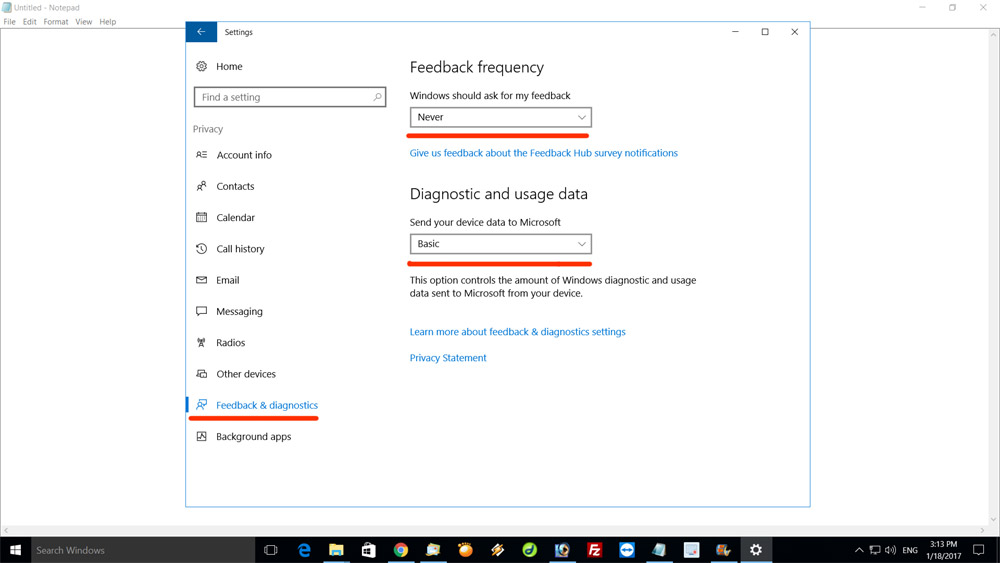
7. Turn off Windows 10 & 8.1 Startup programs that you don’t need
When you first turn on your computer, Windows starts to load all programs that are registered as startup programs. Many of them must be turned on to make your applications working properly, but sometimes you will find startup programs that you don’t need or you don’t want to use. Let’s turn off those startup programs to boost your Windows starting speed! Less programs you have on startup, the Windows will load faster 😀 😀 😀
On your keyboard, Press “Ctrl+Alt+Del” keys together or you can type “Task Manager” in Windows Search -> Click “Task Manager” -> Click “Startup” tab -> Select any unwanted startup programs -> Click “Disable”
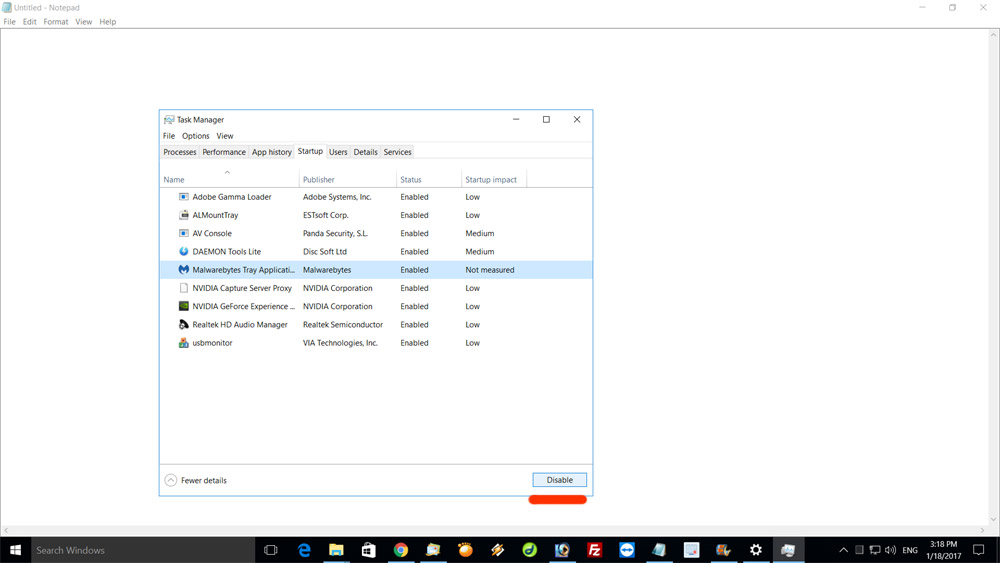
8. Scan for virus and malware using Malwarebytes Anti-Malware
Even if we have completed above instructions, your computer could be slow due to virus, malware, trojan and any other bad software. Let’s try to get rid of them for the last step ! 😀 😀 😀 let’s make your computer clean and smooth ! We do recommend a anti-malware software called “Malwarebytes Anti-Malware. It looks like this program is really good at finding malware than any others at this point.
Go to this website to download the Malwarebytes Anti-Malware: http://www.malwarebytes.org/products/
Download the “FREE” version and install. When you are finishing the installation of Malwarebytes, if you check 30 day trial of premium version, you can also experience the full features of Malwarebytes Anti-Malware. Run the program, and click “SCAN”. This will start the scanning and it will find all the malware and threats. When the scanning is done, Check all detected items, and click “REMOVE”.
Your Windows 10, and 8.1 now will perform lot faster than before !
We hope everyone liked our awesome blog post. Thank you for reading and if you have any questions, leave a comment here. 🙂 🙂 🙂

